Crystallography and Crystal Defects,
Original price was: ₹6,098.80.₹4,879.04Current price is: ₹4,879.04.
ISBN: 9780470750148
Author/Editor: Anthony Kelly
Publisher: John Wiley
Year: 2012
1 in stock (can be backordered)
Description
Extensively revised and updated, this new edition of a classic text presents a unified approach to crystallography and to the defects found within crystals. The book combines the classical and exact description of symmetry of a perfect crystal with the possible geometries of the major defects-dislocations, stacking faults, point defects, twins, interfaces and the effects of martensitic transformations. A number of important concepts and exciting new topics have been introduced in this second edition, including piezoelectricity, liquid crystals, nanocrystalline concepts, incommensurate materials and the structure of foamed and amorphous solids. The coverage of quasicrystalline materials has been extended, and the data tables, appendices and references have been fully updated.
Reinforcing its unrivalled position as the core text for teaching crystallography and crystal defects, each chapter includes problem sets with brief numerical solutions at the end of the book. Detailed worked solutions, supplementary lecture material and computer programs for crystallographic calculations are provided online
Additional information
| Weight | 0.922 kg |
|---|
Product Properties
| Year of Publication | 2012 |
|---|---|
| Table of Contents | Preface xiii Part I Perfect Crystals 1 1 Lattice Geometry 3 1.1 The Unit Cell 3 1.2 Lattice Plane and Directions 7 1.3 The Weiss Zone Law 11 1.4 Symmetry Elements 14 1.5 Restrictions on Symmetry Elements 16 1.6 Possible Combinations of Rotational Symmetries 21 1.7 Crystal Systems 26 1.8 Space Lattices (Bravais Lattices) 26 Problems 37 Suggestions for Further Reading 40 References 41 2 Point Groups and Space Groups 43 2.1 Macroscopic Symmetry Elements 43 2.2 Orthorhombic System 49 2.3 Tetragonal System 52 2.4 Cubic System 53 2.5 Hexagonal System 56 2.6 Trigonal System 59 2.7 Monoclinic System 63 2.8 Triclinic System 65 2.9 Special Forms in the Crystal Classes 67 2.10 Enantiomorphous Crystal Classes 68 2.11 Laue Groups 69 2.12 Space Groups 69 2.13 Nomenclature for Point Groups and Space Groups 78 2.14 Groups, Subgroups and Supergroups 79 2.15 An Example of a Three-Dimensional Space Group 79 Problems 82 Suggestions for Further Reading 84 References 84 3 Crystal Structures 85 3.1 Introduction 85 3.2 Common Metallic Structures 86 3.3 Related Metallic Structures 93 3.4 Other Elements and Related Compounds 95 3.5 Simple MX and MX2 Compounds 98 3.6 Other Inorganic Compounds 104 3.7 Interatomic Distances 110 3.8 Solid Solutions 110 3.9 Polymers 113 3.10 Additional Crystal Structures and their Designation 116 Problems 119 Suggestions for Further Reading 121 References 122 4 Amorphous Materials and Special Types of Crystal Solid Aggregate 123 4.1 Introduction 123 4.2 Amorphous Materials 123 4.3 Liquid Crystals 126 4.4 Geometry of Polyhedra 129 4.5 Icosahedral Packing 134 4.6 Quasicrystals 135 4.7 Incommensurate Structures 137 4.8 Foams, Porous Materials and Cellular Materials 137 Problems 139 Suggestions for Further Reading 139 References 140 5 Tensors 141 5.1 Nature of a tensor 141 5.2 Transformation of components of a vector 142 5.3 Dummy Suffix Notation 145 5.4 Transformation of Components of a Second-Rank Tensor 146 5.5 Definition of a Tensor of the Second Rank 148 5.6 Tensor of the Second Rank Referred to Principal Axes 149 5.7 Limitations Imposed by Crystal Symmetry for Second-Rank Tensors 153 5.8 Representation Quadric 155 5.9 Radius Normal Property of the Representation Quadric 159 5.10 Third- and Fourth-Rank Tensors 161 Problems 161 Suggestions for Further Reading 163 References 163 6 Strain, Stress, Piezoelectricity and Elasticity 165 6.1 Strain: Introduction 165 6.2 Infinitesimal Strain 166 6.3 Stress 170 6.4 Piezoelectricity 177 6.5 Elasticity of Crystals 181 Problems 193 Suggestions for Further Reading 196 References 196 Section II Imperfect Crystals 197 7 Glide and Texture 199 7.1 Translation Glide 199 7.2 Glide Elements 203 7.3 Independent Slip Systems 208 7.4 Large Strains of Single Crystals: The Choice of Glide System 218 7.5 Large Strains: The Change in the Orientation of the Lattice During Glide 222 7.6 Texture 228 Problems 235 Suggestions for Further Reading 237 References 237 8 Dislocations 241 8.1 Introduction 241 8.2 Dislocation Motion 247 8.3 The Force on a Dislocation 249 8.4 The Distortion in a Dislocated Crystal 253 8.5 Atom Positions Close to a Dislocation 258 8.6 The Interaction of Dislocations with One Another 261 Problems 265 Suggestions for Further Reading 266 References 267 9 Dislocations in Crystals 269 9.1 The Strain Energy of a Dislocation 269 9.2 Stacking Faults and Partial Dislocations 277 9.3 Dislocations in c.c.p. Metals 280 9.4 Dislocations in the Rock Salt Structure 288 9.5 Dislocations in Hexagonal Metals 290 9.6 Dislocations in b.c.c. Crystals 295 9.7 Dislocations in Some Covalent Solids 297 9.8 Dislocations in Other Crystal Structures 301 Problems 301 Suggestions for Further Reading 303 References 303 10 Point Defects 305 10.1 Introduction 305 10.2 Point Defects in Ionic Crystals 309 10.3 Point Defect Aggregates 310 10.4 Point Defect Configurations 312 10.5 Experiments on Point Defects in Equilibrium 317 10.6 Experiments on Quenched Metals 321 10.7 Radiation Damage 324 10.8 Anelasticity and Point Defect Symmetry 326 Problems 329 Suggestions for Further Reading 331 References 331 11 Twinning 335 11.1 Introduction 335 11.2 Description of Deformation Twinning 337 11.3 Examples of Twin Structures 342 11.4 Twinning Elements 350 11.5 The Morphology of Deformation Twinning 354 Problems 358 Suggestions for Further Reading 360 References 360 12 Martensitic Transformations 363 12.1 Introduction 363 12.2 General Crystallographic Features 364 12.3 Transformation in Cobalt 366 12.4 Transformation in Zirconium 369 12.5 Transformation of Indium Thallium Alloys 374 12.6 Transformations in Steels 379 12.7 Transformations in Copper Alloys 382 12.8 Transformations in Ni Ti-Based Alloys 383 12.9 Transformations in Nonmetals 384 12.10 Crystallographic Aspects of Nucleation and Growth 385 Problems 387 Suggestions for Further Reading 388 References 389 13 Crystal Interfaces 391 13.1 The Structure of Surfaces and Surface Free Energy 391 13.2 Structure and Energy of Grain Boundaries 397 13.3 Interface Junctions 409 13.4 The Shapes of Crystals and Grains 414 13.5 Boundaries between Different Phases 420 13.6 Strained Layer Epitaxy of Semiconductors 424 Problems 429 Suggestions for Further Reading 431 References 431 Appendix 1 Crystallographic Calculations 435 A1.1 Vector Algebra 435 A1.2 The Reciprocal Lattice 440 A1.3 Matrices 443 A1.4 Rotation Matrices and Unit Quaternions 448 References 449 Appendix 2 The Stereographic Projection 451 A2.1 Principles 451 A2.2 Constructions 455 A2.3 Constructions with the Wulff net 460 A2.4 Proof of the Properties of the Stereographic Projection 465 References 468 Appendix 3 Planar Spacings and Interplanar Angles 469 A3.1 Planar Spacings 469 A3.2 Interplanar Angles 472 Appendix 4 Transformation of Indices Following a Change of Unit Cell 473 A4.1 Change of Indices of Directions 473 A4.2 Change of Indices of Planes 475 A4.3 Example 1: Interchange of Hexagonal and Orthorhombic Indices for Hexagonal Crystals 476 A4.4 Example 2: Interchange of Rhombohedral and Hexagonal Indices 477 Appendix 5 Slip Systems in C.C.P. and B.C.C. Crystals 481 A5.1 Independent Glide Systems in C.C.P. Metals 481 A5.2 Diehl s Rule and the OILS Rule 483 A5.3 Proof of Diehl s Rule and the OILS Rule 485 References 486 Appendix 6 Homogeneous Strain 487 A6.1 Simple Extension 488 A6.2 Simple Shear 488 A6.3 Pure Shear 489 A6.4 The Relationship between Pure Shear and Simple Shear 489 Appendix 7 Crystal Structure Data 491 A7.1 Crystal structures of the Elements, Interatomic Distances and Ionic radii at Room Temperature 491 A7.2 Crystals with the Sodium Chloride Structure 495 A7.3 Crystals with the Caesium Chloride Structure 496 A7.4 Crystals with the Sphalerite Structure 497 A7.5 Crystals with the Wurtzite Structure 497 A7.6 Crystals with the Nickel Arsenide Structure 497 A7.7 Crystals with the Fluorite structure 498 A7.8 Crystals with the Rutile Structure 498 Appendix 8 Further Resources 499 A8.1 Useful Web Sites 499 A8.2 Computer Software Packages 499 Brief Solutions to Selected Problems 501 Index 509 |
| Author | Anthony Kelly |
| ISBN/ISSN | 9780470750148 |
| Binding | Paperback |
| Edition | 2 |
| Publisher | John Wiley |
You must be logged in to post a review.

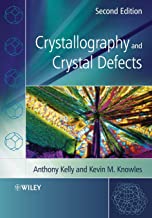
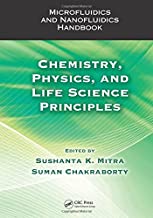
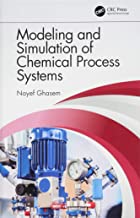
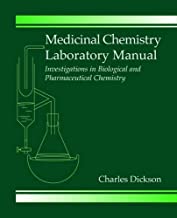
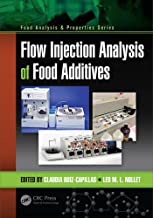
Reviews
There are no reviews yet.